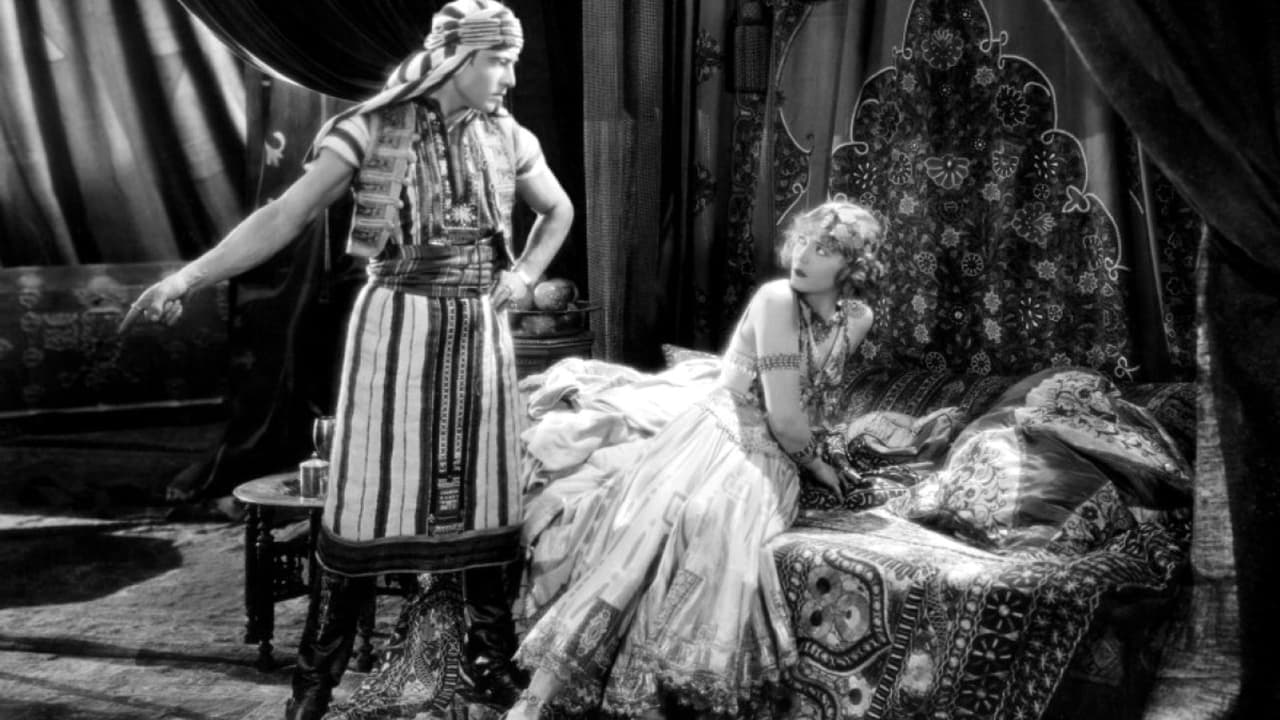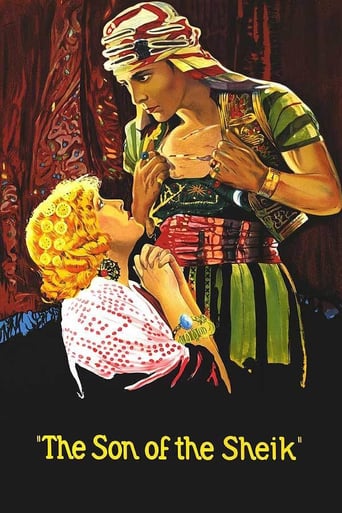gavin6942
The son of the sheik (Rudolph Valentino) and a dancing girl fall in love, but when he is made to believe she has betrayed him he seeks revenge.At the time of the film's release, Rudolph Valentino was attempting to make a comeback in films. He rose to international stardom after the release of The Four Horsemen of the Apocalypse and The Sheik in 1921, both of which were box office hits and solidified his image as "the Great Lover". By 1924, however, Valentino's popularity had begun to wane after he appeared in two box office failures, Monsieur Beaucaire and A Sainted Devil, both of which featured him in roles that were a departure from his "Great Lover" image.And this was the end of Valentino, who died all too early. Interestingly, despite his brief run, he is still more or less remembered today. Maybe people haven't seen his films, but they know his name. No other silent star, except Lon Chaney, can really claim that distinction. (Buster Keaton probably should have retired after the silent era.)
jldmp1
Valentino's final film is unremarkable for its characters or plot - the latter is but a melodramatic trifle. It is, however, of some historical interest with regard to visual narrative.Of course, back then there were no 'vocal technician' actors. Every actor had to tell a story with his or her body, face, and especially with the eyes. On that count, there's plenty of trademark Rudy glares, modulated with knowing smirks and slight raises of his right brow. He was keenly aware of his power over women, and wasn't afraid to use it - it shows here.Likewise, Banky has to keep the male audience interested, so she has to project this without words - and so her dances are engineered to send men into smoldering paroxysms -- somewhat risible, today. Compare this to Samantha Morton's performance in "Sweet and Lowdown" to see how far we've come, not only in movie craft, but in the degree of competence we expect from the actors.The key technical feature is the split screen compositions with Rudy playing 'the Sheik' and 'the Son' in the same frame -- not original, but quite effective and nearly seamless. Simultaneously, it ties in the first "Sheik" AND this story; Rudy has to reinvent the first character - very clever.The big weak spot, though, is in the intertitles. These were not well handled - they aren't edited to any effect, they're simply cut right in between the actors' mouth movements. This could have been essential viewing if someone had the vision to manipulate us more effectively through the editing.
lugonian
THE SON OF THE SHEIK (United Artists, 1926), directed by George Fitzmaurice, reunites the leading players of Rudolph Valentino and Vilma Banky, most recent stars of THE EAGLE (UA, 1925), in what has become one of the most popular films from the silent era, mainly because of it not only being Valentino's final screen performance, but is where the legend of Valentino began. A sequel to his earlier success, THE SHIEK (Paramount, 1921), Valentino's career up to this point consisted of hit and miss stories over the next few years until THE EAGLE not only brought renewed interest in Valentino, but reassured it with THE SON OF THE SHEIK. Since sequels were a rarity during that time, Valentino, as did Douglas Fairbanks with the sequel to his immensely popular, THE MARK OF ZORRO (1920), DON Q, SON OF ZORRO (1925), Valentino reprises his original role as well as portraying his own son, Ahmed. Agnes Ayres, Valentino's leading lady in THE SHEIK, is offered special billing in the opening credits, who also re-enacts her original role as Diana, this time as wife and mother.The story begins with the opening titles that read as to the location, "Not East of Suez, but South of Algiers." Yasmin (Vilma Banky) is the daughter of Andre(George Fawcett), a renegade Frenchman and leader of a group of thieves. She supports them through her dancing publicly. In the marketplace (as recalled by Yasmin via flashback), she meets Ahmed (Valentino), a handsome young sheik, and the two fall in love. After meeting with Yasmin secretly one night, Ahmed is captured by her father's renegades and held captive in a building where he hangs by his tied-up wrists placed on the window bars, and subject to whip torture for not revealing the name of his father and other information. After being freed by his men, Ahmed, believing Yasmin as his betrayer, abducts the girl and subjects her to his methods of torture, with one scene looking at Yasmin with vengeance in his eyes, and (off camera) putting her through the process of rape. It would be his father, Ahmed Ben Hassan (Valentino) who orders him to release the girl. After learning the truth from Ramadan (Karl Dane), Ahmed tries to win back Yasmin, who has returned to the dance hall, and now wants nothing to ever do with him.In many ways, a much more interesting story than its predecessor, and brief to the point at 68 minutes. Aside from the fine chemistry between Valentino and Banky, the supporting villain as played by Montagu Love, along with sandy sets with production designs by William Cameron Menzies, THE SON OF THE SHEIK is Valentino's film from start to finish. And with this film as well does the Vilma Banky name remain legendary. But who knows how far Valentino's screen career would have gone had it not been for his untimely death at the age of 31 shortly following the film's release.THE SON OF THE SHEIK did enjoy frequent theatrical revivals for a number of years, usually on a double bill with THE EAGLE, as well as television showings during the early to mid 1960s. It became one of the selected films shown during the summer months on weekly public television series, "The Silent Years" (1971), hosted by Orson Welles (New York City area, WNET, Channel 13, on July 13, 1971). In spite of its popularity and the legend behind it, what's interesting to note is that while the twelve movies featured on "The Silent Years" did enjoy rebroadcasts up till the mid 1970s, THE SON OF THE SHEIK wasn't included in the reruns. Some years would pass before its availability onto video cassette and/or DVD (Blackhawk and/or Kino), the best being from the Killiam Collection accompanied by a theater organ score by Jack Ward. THE SON OF THE SHEIK, which played as part of its silent film collection on American Movie Classics around 1996, can be currently seen and studied whenever played on Turner Classic Movies. For those interested in the legend of Valentino, THE SON OF THE SHEIK, which provides two Valentinos for the price of one, as well as being an important part in cinema history, is worthy screen entertainment. (***)

